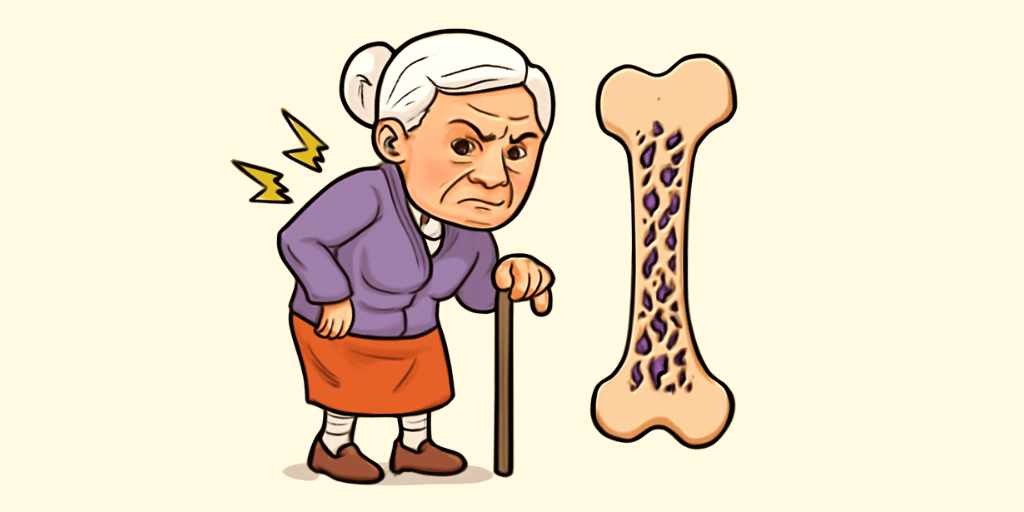Ayurvedic Name: Asthisoushirya
Description:
Osteoporosis is a Vata-dominant disorder characterized by the weakening and porosity of Asthi Dhatu (bone tissue), making bones fragile and prone to fractures. Due to weak Jatharagni (digestive fire), essential nutrients fail to reach bone tissues, which leads to their gradual depletion. Symptoms include joint pain, weak and brittle nails, hair fall, backache, and early aging signs. Factors like excessive fasting, dry food consumption, stress, and aging further accelerate Asthi Kshaya (bone loss).
Signs & Symptoms:
- Asthi Kshaya (Bone Weakness): Loss of bone density, leading to fragile bones prone to fractures.
- Dourbalya (General Weakness): Reduced stamina and muscle loss due to compromised bone health.
- Sandhishoola (Joint Pain): Aching or deep-seated pain in joints and bones, especially in the spine, hips, and knees.
- Shrama (Easy Fatigability): Quick exhaustion and inability to perform physical activities.
- Danta Dourbalya (Weak Teeth): Increased risk of dental issues such as decay and sensitivity.
- Rukshata (Dryness): Dry skin, brittle nails, and hair fall due to calcium depletion.
- Kubjatva (Stooped Posture): Hunched back caused by vertebral compression fractures.
Diagnosis:
Dual-Energy X-ray Absorptiometry (DEXA) Scan
Risk Factors:
- Dietary Factors
Low calcium and vitamin D intake
Excess consumption of caffeine, carbonated drinks, and processed foods
Insufficient protein intake affecting bone health - Lifestyle Factors
Lack of weight-bearing physical activity
Excessive alcohol consumption and smoking
Poor sun exposure leading to vitamin D deficiency - Medical Conditions
Postmenopausal estrogen deficiency
Chronic steroid use affecting bone metabolism
Hormonal imbalances such as thyroid disorders
Complications:
- Fractures (Asthi Bhagna): Increased risk of hip, spine, and wrist fractures
- Kyphosis (Kubjatva): Hunched back due to vertebral collapse
- Chronic Pain (Asthi Shoola): Persistent bone pain due to micro-fractures
Epidemeology:
More common in postmenopausal women
Higher prevalence in individuals above 50 years of age
Affects over 200 million people worldwide

